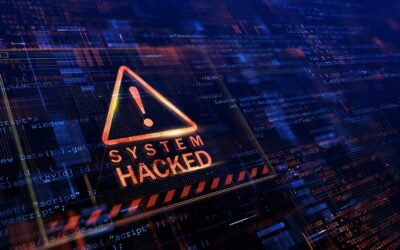Safeguarding Your Business: The Crucial IT Security Measure You Must Have
In today’s digital age, cybersecurity has become a top priority for businesses of all sizes. Protecting sensitive data, safeguarding systems, and maintaining customer trust are paramount. With a myriad of IT security measures available, it can be challenging to determine the most crucial one for your business. In this article, we will explore the key IT security measure that every business must prioritize to establish a strong foundation of protection.
The Importance of Comprehensive Employee Training
While numerous IT security measures contribute to a robust cybersecurity framework, comprehensive employee training stands out as the most crucial measure for businesses. The human element remains one of the weakest links in cybersecurity, as cybercriminals often exploit unsuspecting employees to gain unauthorized access or compromise sensitive information. By prioritizing comprehensive employee training, businesses can significantly enhance their overall security posture.
I. Understanding the Threat Landscape
Comprehensive employee training begins with fostering a deep understanding of the current threat landscape. Cybersecurity awareness programs educate employees about the various types of cyber threats, including phishing attacks, social engineering, malware, and ransomware. By equipping employees with knowledge about common attack vectors and techniques, businesses empower their workforce to recognize and respond to potential threats effectively.
II. Building Strong Security Hygiene
Establishing strong security hygiene is a critical aspect of employee training. This includes promoting best practices such as creating unique and complex passwords, regularly updating software and systems, and exercising caution when clicking on links or downloading attachments. Through training, employees become familiar with the importance of these practices and their role in safeguarding the organization’s digital assets.
III. Recognizing Phishing Attacks
Phishing attacks remain one of the most prevalent and successful methods employed by cybercriminals. Educating employees about the various forms of phishing, such as email, voice, and SMS phishing, helps build a strong defense. Training programs emphasize the importance of scrutinizing suspicious emails, verifying sender identities, and refraining from clicking on unfamiliar links or providing personal information. By honing their ability to identify and report phishing attempts, employees become valuable assets in thwarting cyber threats.
IV. Data Protection and Privacy
Comprehensive employee training should encompass data protection and privacy best practices. This involves educating employees about the significance of handling sensitive data with care, maintaining confidentiality, and adhering to applicable regulations such as the General Data Protection Regulation (GDPR) or the California Consumer Privacy Act (CCPA). By fostering a culture of data protection and privacy, businesses can minimize the risk of data breaches and demonstrate their commitment to safeguarding customer information.
V. Incident Response and Reporting
Effective incident response and reporting are critical components of comprehensive employee training. Employees should be trained in how to promptly report security incidents or potential breaches to the appropriate internal channels. Establishing clear reporting procedures ensures that incidents are promptly addressed, mitigating potential damage, and minimizing downtime. Training programs should also cover the steps to follow in the event of a security incident, including containment, investigation, and recovery.
The Vital Role of Comprehensive Employee Training in Strengthening IT Security
While a multi-layered approach to IT security is essential, comprehensive employee training stands as the cornerstone of effective cybersecurity. By prioritizing this crucial measure, businesses empower their employees to become the first line of defense against cyber threats. Training programs that foster an understanding of the threat landscape, promote strong security hygiene, recognize phishing attacks, prioritize data protection, and emphasize incident response and reporting equip employees with the knowledge and skills needed to safeguard the organization’s digital assets.
As businesses continue to navigate an increasingly complex cybersecurity landscape, investing in comprehensive employee training will yield long-term benefits. By cultivating a cybersecurity-aware culture, businesses can strengthen their overall security posture, protect sensitive data, and fortify their reputation in an ever-evolving digital world.




